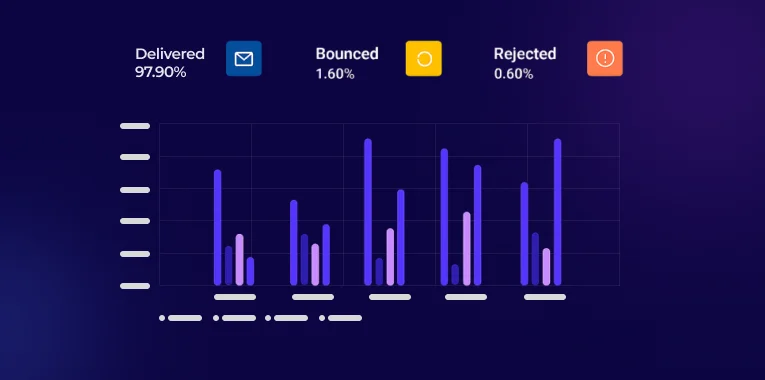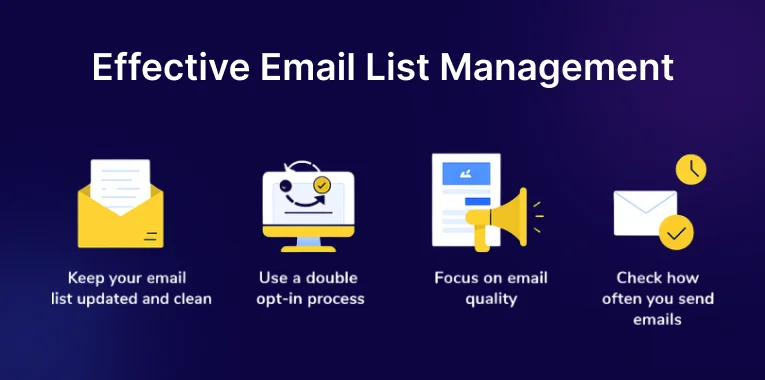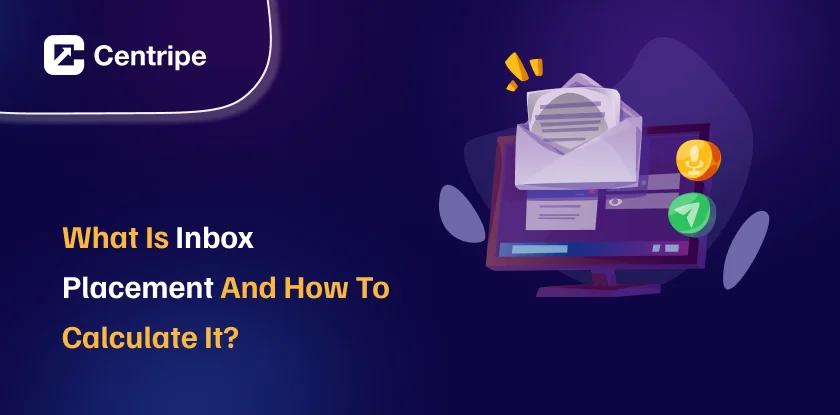Ever wondered why some of your emails get replies while others seem to disappear?
It’s not always about what you wrote; it’s often about where your email lands. In 2025, Gmail delivers around 87.2% of emails to the main inbox, but for Microsoft, that number drops to 75.6%
That small difference can cost you big.
If your message ends up in spam or promotions, it’s almost invisible. Studies show that 1 in 6 marketing emails never reach the main inbox, resulting in lost opens, clicks, and sales.
Inbox placement is more than just “delivered or not.”
It’s the difference between being seen and being ignored. And improving it could mean 20–40% more opportunities from email.
What is Inbox Placement?
Inbox placement simply means where your email ends up after you send it. It could go into someone’s main inbox, spam folder, promotions tab, or any other folder.
If you want people to actually read your emails, you need them to land in the main inbox. That’s the place where they’re most likely to see and open them. If they go to spam or other tabs, your chances drop, and so does the time and money you spent sending them.
Is Inbox Placement the Same as Email Deliverability?
Not exactly.
- Email deliverability just tells you if the email was sent successfully.
- Inbox placement tells you exactly where it landed main inbox, spam, or somewhere else.
Think of it like this: deliverability says, “Yes, your letter reached the postbox.” Inbox placement says, “It’s in the right box where the person will open it.”
Inbox placement is a part of deliverability. If you improve your deliverability, you often improve your inbox placement too.
To explore proven methods, check out our guide on email deliverability best practices.
How to Calculate Your Inbox Placement Rate

Calculating inbox placement isn’t as simple as checking your bounce rate. Here’s the formula:
Inbox Placement Rate = (Number of Emails in Primary Inbox ÷ Total Number of Emails Sent) × 100
Real-Time Calculation Example
Let me walk you through this with real numbers. Say your sales team fires off 5,000 prospecting emails:
- 4,900 get delivered (98% delivery rate – nice!)
- 3,675 hit the primary inbox
- 980 land in promotions
- 245 go straight to spam (ouch)
Your inbox placement rate? (3,675 ÷ 5,000) × 100 = 73.5%
Now 73.5% might not sound catastrophic, but hang on – that means over 1,300 prospects never saw your email where it matters. With average B2B conversion rates around 2.5%³, you just lost 32 potential opportunities.
Tips to Improve Your Inbox Placement Rate
Follow these five simple strategies to help your emails reach the inbox more often, and you’ll notice better results in no time.
1. Keep your email list updated and clean
The first step to getting emails in the inbox is keeping your list healthy.
Remove wrong, fake, or inactive email addresses regularly. You might find it difficult to remove the contacts that you have gathered but emails to people who do not open the letters will only add to the possibility of getting your message into the spam box.
Even the most perfect of emails are not appealing to everyone, and it is okay.
2. Use a double opt-in process
A double opt-in means people confirm they want your emails after signing up.
Some might worry this will reduce sign-ups, but it’s better to have fewer people who are genuinely interested than a big list full of those who ignore you.
Quality always beats quantity when it comes to subscribers.
3. Focus on email quality
Write subject lines that will arouse the curiosity of people, and the rest of the email must be understandable, useful, and readable.
As folks open and click the emails you are sending, the email providers perceive you as a trusted sender and chances are high that the message will be filtered into the primary email without being redirected to spam.
4. Check how often you send emails
Sending too many emails can annoy people, while sending too few can make them forget you.
Strike the right balance that ensures that you keep in touch with your audience, but not to a point where they get tired of you. When you send too frequently, people are likely to spam you; when you send too rarely, you are leaving opportunities on the table.

5. Build trust with consistent sender details
Other times when you want to use your email, be sure to do it using the same name and the same email that you are using so that people can know that it is you immediately.
Also, configure email security options such as SPF, DKIM, and DMARC to demonstrate to email services that you are genuine. Behaving as a trusted sender will keep you out of spam.
How Long Does It Take to Improve Inbox Placement?
- Quick wins (authentication, list cleaning): 1-2 weeks
- Noticeable improvement: 4-6 weeks
- Major transformation: 3-4 months
- Reputation recovery (if you’ve messed up): 6-12 months
Conclusion
Here’s the deal – great inbox placement isn’t something you achieve once and forget about. It’s an ongoing commitment, kind of like going to the gym (but for your email program).
Teams that get this right typically see:
- 15-30% lift in engagement
- 20-40% more pipeline from email
- Lower CAC
- Better reputation across everything
The difference between mediocre and excellent inbox placement? We’re talking millions in revenue for most B2B companies. Every email that hits the primary inbox is another shot at building relationships and closing deals.
Start by measuring your current inbox placement using the methods we showed you. Then hit the strategies that’ll make the biggest difference for your situation.
Your competitors are probably struggling with the same inbox placement issues. Master this, and you’re not just improving metrics, you’re getting a real competitive advantage in actually reaching your audience.
